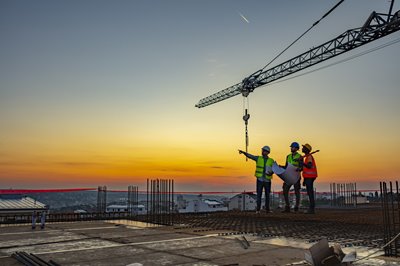 Being an engineer and running a full mechanical contracting company, I appreciate the benefits of bringing together architects or engineers and different trades to discuss projects before they are on the jobsite. Jobsites to me are like an orchestra, where coordination is paramount to successfully produce the desired outcome. You need a conductor (owner) and a rehearsal (meeting) to make sure everyone knows their role, the right instruments (team members) and the correct coordination to get everyone ready for the live performance (the jobsite).
Being an engineer and running a full mechanical contracting company, I appreciate the benefits of bringing together architects or engineers and different trades to discuss projects before they are on the jobsite. Jobsites to me are like an orchestra, where coordination is paramount to successfully produce the desired outcome. You need a conductor (owner) and a rehearsal (meeting) to make sure everyone knows their role, the right instruments (team members) and the correct coordination to get everyone ready for the live performance (the jobsite).
Analogies aside, design-build increases communication and understanding of what’s needed on the jobsite and increases the probability the project will meet or exceed customer expectations. Unlike sports, which is always my go-to, a win-win is the best outcome possible and design-build delivers on several fronts.
ASHRAE President Chuck Gulledge and I recently agreed that engineers and contractors working together from one model saves time and money. Chuck added a poignant comment that resonated with me and that is “The world is evolving to a single narrative, full team, all-engaged at conception, and working in one model – and the owner owns the model.
 For many contractors, design-build may not be a common occurrence in your shop, if at all, but nearly 80% of Western Allied Mechanical’s work now has design-build built into the project scopes and I couldn’t be happier. For those contractors looking to add design-build capability into their business, my good friend Guy Gast, President of the Waldinger Group, Iowa Division, shared some sound advice on our Let’s Talk Shop podcast episode.
For many contractors, design-build may not be a common occurrence in your shop, if at all, but nearly 80% of Western Allied Mechanical’s work now has design-build built into the project scopes and I couldn’t be happier. For those contractors looking to add design-build capability into their business, my good friend Guy Gast, President of the Waldinger Group, Iowa Division, shared some sound advice on our Let’s Talk Shop podcast episode.
Guy recommended “you partner with an engineering firm instead of hiring a person and announcing you now have design-build capabilities. Together with your partner firm, you can then market yourselves to engineering firms that appear to be in the end-user space. You want to then pitch engineering firms that are influencing decision makers and owners in the space where you work. Become more familiar with them whether it is through local ASHRAE meetings, or other social networks and be intentional about the process.”
The last piece of advice Guy shared was, “what’s the worst thing that would happen by getting into design-build? I might not succeed…I might not get my foot in the door…I might not develop that relationship I was seeking. If that’s the worst that would happen, then why wouldn’t you try it if it’s not going to cost you any money?”
I couldn’t agree more.
Sincerely,
Angie Simon, SMACNA President